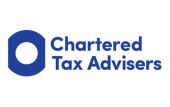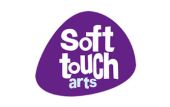
The good, the bad, the could do better
Employee ownership trusts: the good, the bad and the room for improvement
Key points
- The Finance Act 2014 introduced legislation so that the sale of a company into an employee ownership trust would be free of capital gains tax to the vendors, so long as the relief requirements were met.
- A benefit of being owned by an EOT is that the company doesn’t have to pay its profits to shareholders but can retain them for the benefit of the business.
- The legislation clearly has pitfalls.
- The relief requirements have to be satisfied at all times after the company is sold into an EOT but it is not always clear that trustees have been appropriately advised on this point.
- The author has submitted three ideas to HMRC on how the legislation could be improved in order to ensure that it hits its target market but also looks more like genuine employee ownership.
- Would readers consider that setting up an EOT with offshore trustees is, in and of itself, a form of tax avoidance?
Various forms of employee ownership of businesses have been around for a long time. For example, everyone knows that John Lewis is owned by its employees, and that business is well over 100 years old. Indeed, there is a support organisation for employee-owned businesses, the Employee Ownership Association (www.employeeownership.co.uk). Its website tells us that employee-owned businesses achieve higher productivity and greater levels of innovation than other businesses and are more resilient to economic turbulence. Furthermore, the workforce tends to be more engaged and more fulfilled and, importantly in this day and age, less stressed.
Following the report by Graeme Nuttall into employee ownership in 2012 (Sharing success: the Nuttall review of employee ownership (tinyurl.com/NuttallReport)), and despite the fact that that report did not specifically suggest any tax incentives, legislation was introduced by the Finance Act 2014, so that the sale of a company into an employee ownership trust (EOT) would be free of capital gains tax to the vendors, so long as various conditions were met (the relief requirements). The disposal was treated as no gain and no loss, so that the trustees of the trust would inherit the shares at the original base cost of the vendor shareholders.
The purpose of this article is not to discuss all the technicalities of the legislation. Rather, I want to explore some of the areas where the existing legislation could be improved, making it easier to operate for taxpayers and HMRC alike. William Franklin, in the next article, then asks the question why the legislation only targets sales to employee ownership trusts and does not give similar tax benefits to other forms of employee ownership.
Overview and relief requirements
The legislation provides for a no gain, no loss capital gains tax position where shares of a trading company are sold into an employee ownership trust by an individual or a trust (TCGA 1992, s 236H). In order for the relief to be available, there are a number of relief requirements. Very briefly, these are:
- The trading requirement (TCGA 1992, s 236I) is that the company must be a trading company or the principal member of a trading group, meaning a company or group that ‘carries on trading activities and whose activities do not include to a substantial extent activities other than trading activities’. This definition will be familiar to anyone who has looked at capital gains gift relief, business asset disposal relief or the substantial shareholding exemption.
- The all-employee benefit requirement (TCGA 1992, s 236J) broadly requires that the trustees can only apply the property of the trust for the benefit of eligible employees and to do so in line with the equality requirement (TCGA 1992, s 236K), which allows benefits to employees to be varied only by reference to their levels of remuneration, their seniority and their general hours worked. The eligible employees are generally every employee or office holder of the company except material participators in the company itself or of any group company and any person connected with them. In this context, anyone with 5% or less of the company’s share capital, or of any class of shares of the company, and who does not have rights to at least 5% of the proceeds in a winding up of the company, is not an excluded participator.
- The controlling interest requirement (TCGA 1992, s 236M) simply requires the trust to hold more than half of the ordinary share capital of the company, to have the majority of voting power and to be entitled to more than 50% of the profits available for distribution to equity holders and of the assets available for distribution to equity holders on a winding up.
- The limited participation requirement (TCGA 1992, s 236N) says that the ratio of shareholders that are employees or office holders to the total number of employees (the participator fraction) must be less than 2/5, both in the year up to the disposal and afterwards. Once again, the participator number includes employees or office holders who are connected with participator employees or office holders, but the rule does not apply where the participators concerned have less than a 5% interest in the company (as above).
As long as the relief requirements are met, relief is due for all sales of shares into the EOT in the tax year in which the trust acquires the 51% interest in the company. In most cases, this is straightforward, as there will be a single sale of shares to an EOT in one transaction. However, it is possible to set up an EOT and for shares to be sold into it in tranches over a number of tax years, in which case relief is only available for those disposals which occur in the tax year during which the trust’s interest first exceeds 50%.
Disqualifying events
A disqualifying event occurs if the company ceases to satisfy the trading requirement, the all-employee benefit requirement or the controlling interest requirement, or the participating fraction exceeds 2/5. Furthermore, if the trustees act in a way which the trusts do not permit, in respect of the all-employee benefit requirement, this is also a disqualifying event (TCGA 1992, s 236O and s 236P). The consequences of a disqualifying event depend on when it occurs.
If a qualifying event occurs in the tax year following that in which the relevant disposals were made (ie, those disposals for which a claim for relief would be valid), no relief is due to the vendor shareholders under these rules (TCGA 1992, s 236O). Of course, they will then be entitled to any reliefs available under the normal capital gains tax rules, such as business asset disposal relief, gift relief, etc.
If a disqualifying event happens at any later time, the trustees are treated as having sold the shares of the company immediately prior to the disqualifying event, and as having immediately reacquired them (TCGA 1992, s 236P). This only applies to the shares for which relief has been claimed, but it means that the trustees are potentially on the hook for a large capital gains tax charge, which would likely be a dry charge, on the basis that there has been no actual disposal to generate cash proceeds (unless, of course, the disqualifying event is a sale of the shares, in which case the cash will usually be available to pay the tax).
The overall effect here is that the relief requirements have to be satisfied at all times after the company is sold into an EOT. Our experience working with these transactions is that it is not always clear that trustees have been appropriately advised on this point.
Employee benefits
While employee ownership is generally considered a good thing, as noted above, it’s not clear that the tax rules for sale into EOTs generate anywhere near as much benefit for the employees of the company as they do for the vendors. The only obvious fiscal benefit to employees is that the company can pay them bonuses of up to £3,600 a year free of income tax (ITEPA 2003, s 312A). Employers’ and employees’ National Insurance is still due and there is another set of complex requirements that must be satisfied for relief from income tax on these bonuses to apply (ITEPA 2003, s 312B to s 312I). We don’t intend to rehearse them here but they are broadly analogous to the relief requirements for sale to the EOT.
The main point we are making here, however, is that £3,600 a year free of income tax might be welcome to many of the employees of a company, but the overall benefit pales into insignificance when compared to the capital gains tax saving for the vendors for having sold the company to an EOT in the first place. For example, we have recently completed the sale of a company worth over £100m into an EOT, where two shareholders owned around 45% of the company each. Clearly it would take a lot of payments of £3,600 per employee to generate as much savings as either one of those shareholders will have obtained.
In practice, of course, the benefits to employees might accrue more subtly. For the first few years of ownership by a trust, it is likely that the majority of profits will be contributed to the trustees to pay off the debt and associated costs (see ‘Funding’ below). But once the trust is debt free, there is no obvious commercial reason to pay dividends to the trust. If the trustees did receive taxable dividends, they would suffer income tax. Any distributions of the remainder would be treated as earnings (see ‘Distributions to beneficiaries’ below), which clearly smacks of double taxation – income tax on dividends, followed by income tax and National Insurance on earnings.
On the other hand, if the profits are not distributed to the trustees, they can be retained in the company and used to pay higher salaries to the employees, or for reinvestment into the business, from which everyone should benefit. In effect, therefore, one might argue that a major benefit of being owned by an EOT is that the company doesn’t have to pay its profits to shareholders but can retain them for the benefit of the business, instead.
Where did it all go wrong?
It is clear from some of our comments that we consider the legislation to be deficient in some areas. We don’t say this as advisers trying to find ways to minimise tax liabilities for our clients, we are genuinely looking more deeply at government policy and tax incentives that might encourage employee ownership. So we have a number of ideas as to how the legislation could be improved in order to ensure that it hits its target market but also looks more like genuine employee ownership.
The first three ideas that follow have already been submitted to the Treasury and HMRC as Budget representations. The others are under discussion with a group of interested parties who have been meeting occasionally to discuss these matters. I would like to record my thanks to the CIOT for facilitating these meetings (but note that all the views expressed in this article are my own).
Funding
The first issue arises when one looks at the funding of an EOT acquisition. The trustees generally have no money (apart from the £10 that would have been settled into the trust when it was set up), so they are not going to be able to pay for the shares out of existing funds. Of course, it is possible to get commercial funding for such a purchase – it is interesting to note that we are aware of banks and other lenders being comfortable to lend money to EOT trustees to fund all or part of an acquisition but, on the other hand, we have heard anecdotally that most of the major banks are extremely uncomfortable with the idea of opening bank accounts for EOT trustees – but this simply displaces the problem in that, if the trust borrows money to pay for the shares, the trustees have to pay the bank back, rather than pay off the debt owed to the vendors.
The current position is that a company is legally entitled to make contributions to an EOT, although these contributions can only be made out of distributable profits. One of us (Pete Miller) spent some time in the Inland Revenue’s head office as a technical adviser on the distributions legislation and the initial reaction on seeing the operation of the EOT rules was that any payments out of the distributable reserves of a company to the trustees should, as a matter of tax law, be treated as distributions, chargeable to income tax at the distributions rate. This would be disastrous in the context of the trustees’ ability to repay the debt. However, HMRC generally accepts that correctly structured contributions by the company to the trust will not be treated as distributions, so that no income tax is due, and the full amount is available for the trustees to fund repayments to the vendors (or other lenders). Furthermore, HMRC will generally provide assurances in advance on this point under the non-statutory clearance facility.
In our view, not only is this solution a bit of a fudge, but it also imposes extra work on both advisers and HMRC (who has to operate the non-statutory clearance facility). The proposal that has been put to the Treasury is that there should be an exemption for distributions that are used to facilitate payment for the shares, as well as associated costs. Thus, dividends paid by the company to the trustees could be tax-free, so long as they are used to fund the share purchase, as well as possibly funding the stamp duty charges incurred on acquisition of the shares, the professional fees that will have accrued to the trustees and, where appropriate, a reasonable rate of interest on the outstanding debt.
Stamp duty
Stamp duty is a direct cost of the transaction at 0.5% of the agreed price of the shares sold to the trust. This might appear to be a relatively small proportion, but the amounts can quickly mount up; for example the stamp duty on a £5m transaction is £25,000. The trustees will not, of course, have any cash to pay the stamp duty charge, so this will have to be financed out of existing profits of the target company, on the basis that the stamp duty must be paid shortly after the transaction completes. On that basis, this is effectively a dry tax charge for the trustees, and if the legislation is intended to continue encouraging employee ownership, we would suggest that consideration should be given to a stamp duty exemption for the sales of shares that qualify for relief under TCGA 1992, s 236H. This suggestion has also been put to HMRC as part of the consultation process on the modernisation of stamp duty.
Location of trustees
While the disqualifying event provisions impose a burden on the trustees, the rules will only effectively apply if the trustees are UK resident. If the trust is set up outside the UK, they will not be chargeable to UK capital gains tax in most cases, so a disqualifying event will not be a matter of any concern for those trustees. The obvious question is whether readers would consider that setting up an EOT with offshore trustees is, in and of itself, a form of tax avoidance? And the answer must be that it depends!
If a company is sold into an EOT in tax year 2022-23, using offshore trustees, with a view to the trust selling the shares in 2024-25 or later, some might consider it obvious that the transaction is designed to give the vendors the tax advantageous sale into an EOT, without there being any real intention of providing any long-term benefits to the employees. So this might be seen as being on the wrong side of the line.
On the other hand, we understand there are advisers who routinely suggest the use of offshore trustees, just in case there is a disqualifying event that is outside the control of the trustees, in which case, one might argue that this is simply prudent tax planning. In some ways, such a decision might highlight the inflexibility of the tax rules.
Be that as it may, one of the suggestions by the CIOT in its submission to the Treasury is that the relief should be amended to require that the trustees be UK resident.
Governance
The other area on which representations have been made relates to governance. It is not strictly a tax issue, but there is nothing to prevent the same individuals being directors of the company and trustees of the trust (or directors of the trust company). In some cases, they could even be minority shareholders, as well. For example, if the authors of this article owned 50% each of a trading company, and we sold 80% of the shares into an EOT, retaining 10% each, we could retain our positions as directors, we could appoint ourselves as trustees of the EOT and we would also have our own personal interests as minority shareholders of the company. Representations that have been made suggest that there ought to be greater control over the identity of the directors of the company and the trustees of the trust in order to prevent the potential for such conflicts of interest.
Distributions to beneficiaries – is it really employee ownership?
As the regime has matured, there have been a relatively small number of sales out of an employee ownership trust. To be frank, there are a number of administrative issues that arise in these cases that are fairly technical in nature, and which could be sensibly clarified in the legislation (mainly related to the operation of PAYE/NICs on the distribution of surpluses to the beneficiaries). However, at the moment, we are just concentrating on the fact that, all things being equal, the trustees should only agree to a sale of the company if they believe that to do so would be in the best interests of the beneficiaries. In most cases, one would assume that the trustees would only agree to a sale if that meant that there would be a decent surplus available to distribute to the beneficiaries.
The issue here, however, is that any such distribution to the beneficiaries is treated as earnings. This is largely on the basis of the case of Brumby v Milner 51 TC 583, where a trust for the benefit of employees was wound up and the proceeds were distributed to those employees. Effectively, the High Court, the Court of Appeal and the House of Lords all found, albeit in different words, that the payments were made to the employees because they were employees, so that all the sums paid to the employees on the winding up of the trust were earnings. This would bring them squarely into the charge to income tax on earnings as well creating a requirement to account for National Insurance contributions, both by the employer and the employees. In effect, what this says is that, while the employees might benefit from an increase in value of the company while it is owned by the trust, they will be taxed on those proceeds as if they were earnings. Furthermore, the amount available to distribute to the beneficiaries will have been reduced by the capital gains tax charge on the trustees, which smacks of double taxation. There doesn’t seem to be much flavour of ‘ownership’ of the company if the distributed proceeds are taxed in this way.
We would like a change to the legislation so that the distribution of the net of tax proceeds of sale of the company by the trustees would be treated as capital receipts by the beneficiaries. Indeed, since the amounts distributed will be net of capital gains tax paid by the trustees, that treatment would logically mean that there should not be any further capital gains tax payable by each beneficiary. We can see that this might be open to abuse, so we suggest that this treatment only be available in cases where the EOT has held the shares of the company for at least, say, five years. Such a change would not only be a greater benefit to the beneficiaries, it would also have much more of the flavour of real ownership of the company.
This might also play into the original policy intention of encouraging long-term employee ownership of the company, because the trustees (whether onshore or offshore) are likely to want to hold onto the shares for at least the suggested five-year period, so that any surpluses paid to the beneficiaries would be treated as capital, rather than to sell in the shorter term, when the distribution of surpluses would be treated as earnings.
Final thoughts
This article concentrates on the current reliefs for employee ownership costs. It is an important relief that has bolstered employee ownership with increasing numbers of owner-managed businesses being sold into employee ownership trusts to the benefit of both the vendors and the employees of the businesses. As can be seen, there is room for improvement, however, both in terms of the operation of the existing rules and in terms of improving the rules to make them look more like employee ownership.
In a follow up article, William Franklin will be discussing the fact that these reliefs have created something of a monoculture, as sale to an employee ownership trust is the only form of employee ownership that attracts tax relief. William will also be looking at another form of employee ownership for which tax relief might be appropriate.

Pete Miller
This email address is being protected from spambots. You need JavaScript enabled to view it.
07984 353426
Reference: Employee ownership trusts: the good, the bad and the room for improvement | Taxation








